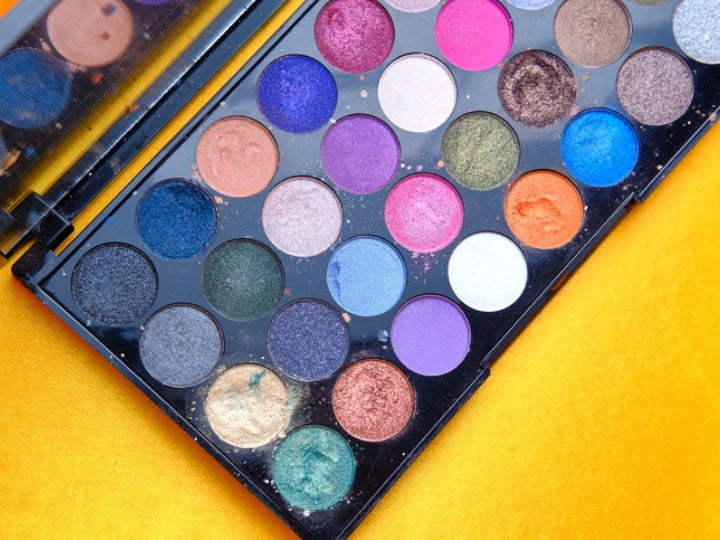Testing for phthalates in cosmetics, beauty products and toiletries with robust analysis to ensure consumer safety, mitigate risks associated with prohibited substances and to meet regulatory expectations
Conducting phthalate analysis for cosmetics products is crucial to ensure consumer safety, mitigate risks associated with prohibited substances, and meet regulatory expectations. Robust analytical testing for phthalates in beauty products helps reduce potential risks to consumer health.
Phthalates, chemicals used to enhance the flexibility of plastics, are found in various consumer products, including toys, packaging, and cosmetics. In the beauty industry, phthalates were traditionally used to improve the functional properties of products, such as creating less brittle nail polishes (e.g., dibutyl phthalate (DBP)) or more flexible films in hair sprays (e.g., dimethyl phthalate (DMP)). Additionally, diethyl phthalate (DEP) is commonly used as a component in fragrances. However, phthalates can also migrate from packaging materials into the cosmetic formulations, necessitating comprehensive phthalate analysis.
Regulatory Context for Phthalates Testing in Beauty Products
In Europe, various phthalates are included in the List of Substances Prohibited in Cosmetic Products from Annex II of Regulation (EC) No 1223/2009. Despite this, the European Commission’s Scientific Committee on Consumer Safety (SCCS) maintains that diethyl phthalate (DEP) is safe for use in cosmetic products at current levels. In the United States, the FDA does not currently have evidence that phthalates, as used in cosmetics, pose a safety risk. However, an ingredient declaration is required on cosmetic products sold at retail, and the use of phthalates has decreased significantly in recent years.
Phthalates Testing for Cosmetic Products and Raw Materials
Our global cosmetics analytical laboratories specialize in phthalate analysis for cosmetics products, performing trace level detection, and screening of samples. Our experienced scientists are skilled in method development and testing, providing precise and reliable results specific to your cosmetic sample matrices using advanced gas chromatography-mass spectrometry (GC-MS) techniques.
We offer phthalate testing services for both raw materials and finished products, supporting your quality control needs in production, ingredient sourcing, and product development. Our screening studies can detect the presence of phthalates and determine their levels, ensuring compliance with regulatory standards.
We use GC-MS to measure the levels of phthalates prohibited by cosmetics regulations, such as di-(2-ethylhexyl) phthalate (DEHP), bis(2-Methoxyethyl) phthalate (DMEP), benzyl butyl phthalate (BBP), and others.
Phthalates Testing for Cosmetics Packaging
The European Cosmetic and Perfumery Association (COLIPA) has highlighted the potential for low levels of phthalates to leach from plastic packaging into cosmetic products. Migration may occur during raw material processing or from the packaging of the finished product. Our phthalate analysis for cosmetics products extends to plastic packaging materials, applying similar techniques as those used for food contact applications to detect and measure phthalate levels.
Alongside our analysis services, we also provide regulatory consulting and toxicology assessments relevant to multiple regional or national cosmetics regulations worldwide including cosmetic safety assessments. In addition, cosmetic products should be correctly labelled and packaged with appropriate INCI (International Nomenclature for Cosmetic Ingredients) ingredients listing and warnings. We provide general toxicological reports for ingredients, preparation, and assessment of cosmetic data, INCI ingredient labelling, and Safety Data Sheet (SDS) authoring.
How to Identify Phthalates in Products?
Identifying phthalates in cosmetics products involves a combination of ingredient analysis and laboratory testing. Consumers can start by reviewing the product's ingredient list for common phthalates, such as DBP, DEP, and DEHP, which are often labeled as "fragrance" or "parfum" components. However, the most reliable method to identify phthalates in a product is through laboratory testing. Using advanced techniques like gas chromatography-mass spectrometry (GC-MS), laboratories can detect and quantify phthalates at trace levels, ensuring the product complies with safety standards and is free from harmful substances. This scientific approach provides the most accurate identification of phthalates, safeguarding consumer health.

